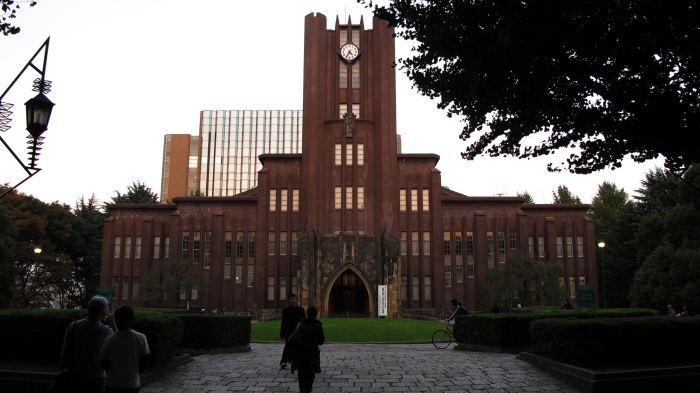Walking on the campus of the University of Tokyo, founded in 1877, you get the sense that you are surrounded by really smart people. Even in the summer months, groups of students meet in common areas to discuss their classes, homework assignments, and life in general. At the University of Tokyo last month, I met with Dr. Yasushi Asami, Director of the Center for Spatial Information Science and Professor in the Department of Urban Engineering.

Photo of the University of Tokyo courtesy of MIKI Yoshihito.
Interestingly, we don’t have “Urban Engineering” as a major at colleges and universities in the United States, but you can think of it generally as city and regional planning with a very quantitative focus; some might even say that urban engineering is similar to regional science here in the U.S. In fact, Dr. Asami received his Ph.D. from University of Pennsylvania in Regional Science. It turns out that he went to Penn with a friend and colleague of mine, Dr. Mike Lahr, who works at Rutgers University and who I know through the Southern Regional Science Association. After we realized that we both knew Mike Lahr, the conversation became much less formal.
How Dr. Asami and I came to meet is an interesting story. Dr. Asami and a former student of his wrote a paper on housing market segmentation, one of my areas of expertise, and cited one of my papers (Lipscomb and Farmer, 2005, “Household Diversity and Market Segmentation Within a Single Neighborhood,” Annals of Regional Science 39:791–810) in their paper. That led me to write Dr. Asami to ask for a meeting, and he agreed to meet. We talked for a few hours, and he gave me a copy of his 2009 book entitled New Frontiers in Urban Analysis (CRC Press, Taylor & Francis Group), which compiles various articles in honor of Atsuyuki Okabe.
Our conversation was very interesting and focused on how to challenge the idea that certain urban engineering concepts that had not been quantified in the past were difficult to quantify. Interestingly, this conversation relates to a similar conversation we’re having at Greenfield on how to quantify appraisal concepts that seem to be difficult to measure. “Quantifying the non-quantifiable” is a theme that appears often around the office these days. In some of our recent work, the 2010 book by Douglas Hubbard entitled How to Measure Anything: Finding the Value of “Intangibles” in Business (John Wiley & Sons, 2nd edition), which provides examples of how just about anything can be measured in some way that can inform business decisions, has come to our attention. It seems that researchers all over the world continue to grapple with the idea of quantifying or measuring things that, on the surface, seem immeasurable. Overcoming this limitation and finding the value of so-called “intangibles” adds more information to business decision-making and policy discussions.
– Clifford Lipscomb





Recent Comments